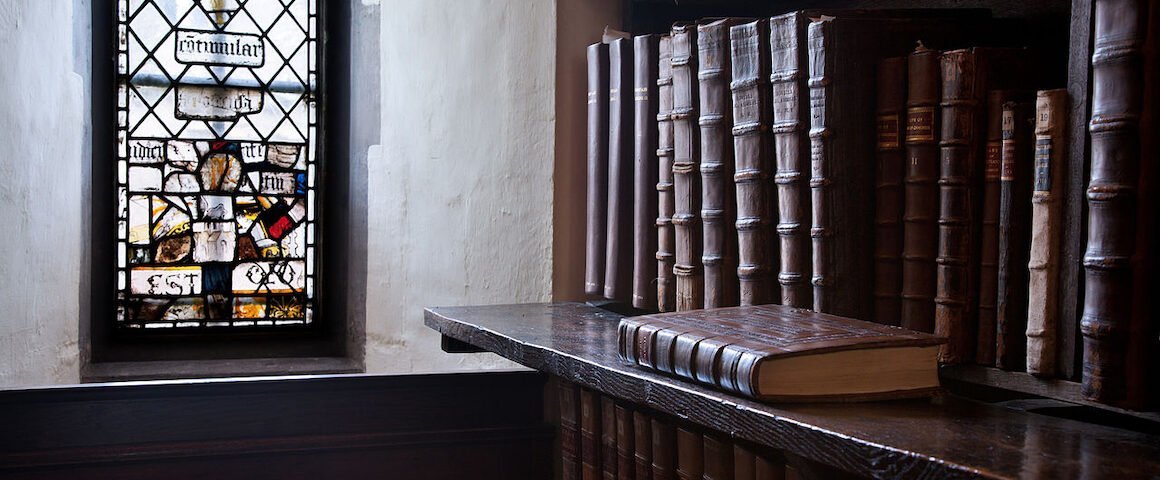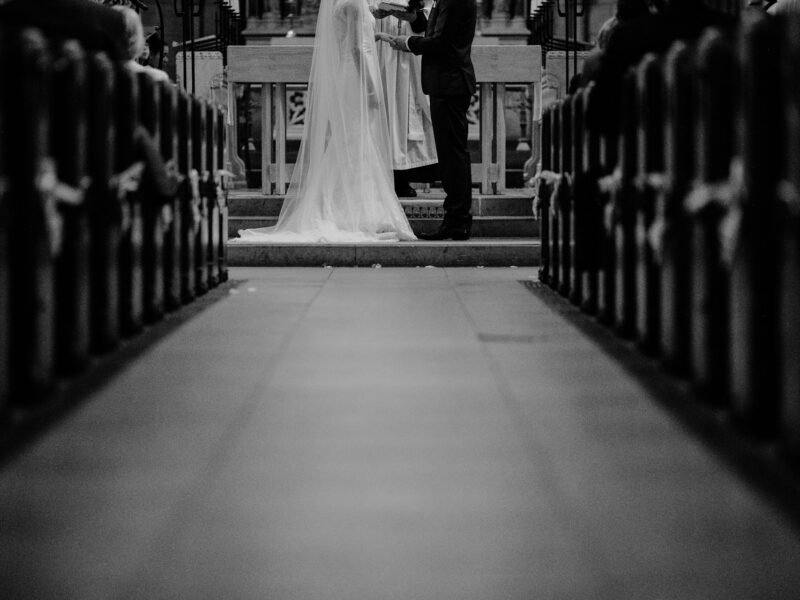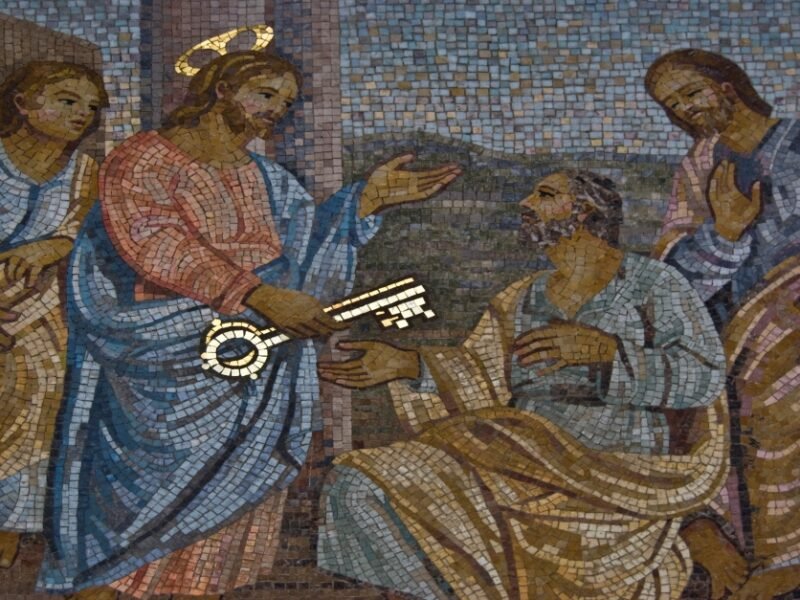In his treatment of Article XV, Browne makes the following comment on the relationship between Adam and Christ:
Adam had a liability to sin, and therefore was susceptible of temptation, before he was actually guilty of sin, and so defiled and corrupted by it. And Christ, who was the second Adam, who came on purpose that He might conquer where Adam had fallen, and so restore that nature which Adam had debased, was, by the constitution of that nature which He adopted, liable to be assailed by the same dangers that Adam had been assailed by. But His own essential holiness and the supporting power of his Godhead enabled Him to endure temptation, and so made it impossible that He should fall under it.
Another way of saying it was impossible for Christ to fall under temptation is that Christ in His earthly ministry was impeccable—that is, Christ not only did not sin, He was incapable of sinning. The impeccability of Christ has been affirmed, whether implicitly or explicitly, in several other commentaries on the Articles as well.[1] However, some theologians and biblical scholars argue that Christ could have sinned, usually on the following grounds: 1) the ability to sin is part of what it means to be tempted, such that if Christ could not sin, then he could not have been truly tempted either; 2) following from 1), if Christ could not sin and he was therefore not truly tempted, then his purported temptations were an inauthentic sham; 3) the inability to sin would violate Christ’s human freedom.[2]
Taking these points in order, the idea that temptation by definition requires the ability to sin is a product of our everyday experience—when we are tempted, there is a real possibility we will fall into sin. Logically speaking, however, it is not necessary that the possibility of sinning exist in order for temptation to be genuine, as Francis J. Hall points out:
Because in this world we…are universally prone to sin, we generalize from our immediate experience, and regard temptability as equivalent to peccability. In doing so, we confuse opportunities and felt inducements to sin with liability to use such opportunities and to yield to such inducements. The former may be clearly perceived and keenly felt—that is, temptation may be fully experienced—by a human agent, whether such experience endangers his righteousness or not. That it does endanger our righteousness is due, not to any intrinsic necessity that temptation, as such, should have this result, but to that imperfection in us which Christ came to remedy.[3]
In other words, what makes the possibility of sinning essential to temptation as we experience it is our own fallenness, not the nature of temptation per se:
Strictly defined, “to tempt” is to test. In ordinary application, it is to test morally, or to put to moral proof by providing opportunities and inducements to sin. This is the proper extent of necessary meaning which can be ascribed to the phrase. The word “temptation” is used to describe both the process or conditions by which we are thus put to moral proof, and the experience or trial to which such a process or condition subjects us.[4]
Nothing about temptation, properly understood, entails that the one who is tempted be able to sin.
Before addressing the second point of whether Christ’s temptations could have been genuine if He was incapable of sin, it will be helpful to clarify the precise nature of the temptations He experienced. To begin with, part of what it means to say Christ was sinless is that Christ did not take on our inclination to sin, i.e., our concupiscence, for the desire to sin is itself sinful, as we have discussed with respect to Article IX. In Browne’s words, “God is of purer eyes than to behold iniquity. Much less can we suppose that God would take iniquity and corruption to Himself, into union with His own spotless purity and holiness.”[5] This means that Christ did not experience any temptations that would have been sinful in themselves, as William Shedd observes: “Our Lord was not tempted by the sinful lusts of pride, ambition, envy, malice, hatred, anger, jealousy, avarice, gluttony, voluptuousness, drunkenness; in short by evil desire or ‘concupiscence’ of any kind.”[6] Furthermore, “Founts of temptation may be classified as those that arise from external forces…and those that rather arise from or are exacerbated by the influence of the inward lusts.”[7] Since we have seen that Christ could not have experienced internal temptations of concupiscence while still being sinless, it follows that all of his temptations must have been external: “It is not possible for Christ to tempt himself, because God tempts no one (Jas 1:13). All his temptations must come from some external agency.”[8] This is exemplified by Satan’s tempting of Christ in the wilderness. As for how best to characterize these temptations—since they were not inherently sinful—Steven J. Duby is worth quoting at length:
The temptations of Christ are an occasion of painful, costly submission to the Father’s will because they involve Christ denying his natural desires and forgoing things that often would be, in ordinary circumstances, legitimate human pursuits. For Christ’s temptations to be true temptations, he does not need to have evil desires or to think that he can commit sin at any moment. Rather, he must have a natural human desire for something like food or the preservation of his own life and a painful sense of the relief it would bring to accept whatever it is that has been proposed to him but contradicts the plan of God (e.g., bread in the wilderness or circumventing the crucifixion).[9]
In short, Christ’s temptations were temptations in that they were at cross-purposes with the divine plan, rather than being inherently sinful in their very nature. Importantly, the fact that Christ and His temptations were free of concupiscence does not make Him less human, but most fully and perfectly human, for the inclination to sin is not part of human nature. So says Browne: “Though human nature, in all naturally engendered of Adam, is stained with the sin of Adam, yet sin is not a part of human nature, but a fault of it.”[10] Moreover, it should not be supposed that to say there was a category of temptations Christ never experienced is a contradiction of Hebrews 4:15, which tells us that Christ “was in all points tempted like as we are, yet without sin.” As with many other passages of Scripture, the verse is not to be understood in an exactingly literal sense, as Shedd notes: “The meaning is not, that our Lord was tempted in every respect exactly as fallen man is by inward lust, as well as by other temptations only he did not outwardly yield to any temptation; but that he was tempted in every way that man is, excepting by that class of temptations that are sinful because originating in evil and forbidden desire.”[11]
Now that we have a more concrete notion of what Christ’s temptations consisted of, we can better consider the second point—if the outcome of His temptations was never in doubt, say, when Satan tempted Him in the wilderness to make stones into bread or cast Himself from the temple, then how could these temptations have been authentic? The answer is that, just as there is no logical necessity that temptation entail the possibility of sinning, in like manner it does not follow from the guarantee that Christ would prevail over His temptations that all struggle would thereby be eliminated. On this see Francis Pieper:
Some object that impeccability would exclude temptability, would make of Christ’s temptation a sham battle. However, Matt. 4:1 ff. does describe a real battle. Moreover, the objection is invalid even under purely human circumstances. One may be very sure of gaining the final victory and yet inflict hard blows upon one’s opponent. Even so the temptation of Christ, although the outcome was never in doubt, was a real battle, in which Satan attacked the soul of Christ with allurements and temptations and in which Christ not seemingly, but actually fought.[12]
As with the first objection, this second objection posits a noncontradiction—there is no logical incompatibility between being incapable of sinning and struggling to overcome temptation.
Coming to the final objection—that to say Christ could not sin is a denial of his human freedom—there is some ambiguity in saying He “could not sin.” Christ, as fully human, had the same basic capacity or power to commit sin as anyone else: “Christ has assumed a certain ‘power of sinning’ (potentia peccandi) where that phrase signifies a created free choice or a faculty whereby the creature can act well or sinfully.”[13] Hence it is not the case that Christ was forcibly prevented from sinning as if by some “mechanical necessity.”[14] That said, what made Christ incapable of sin in practice is the fact that His human nature is indissolubly united to His divine nature—by way of the communicatio idiomatum, in which what properly belongs to one nature can be ascribed to the entire person of the Son, to say Christ could sin in His human nature would be equivalent to the impossible statement that God can sin: “Given that the human nature subsists in and only in the divine Son, the human nature—or, better, the Son according to his human nature—cannot sin. For this divine person ‘cannot deny himself’ (2 Tim. 2:13).”[15] For this reason, the doctrine of Christ’s impeccability is not merely a logical possibility but a necessary component of the Faith, a point well expressed by Herman Bavinck:
Scripture…prompts us to recognize in Christ, not just an empirical sinlessness, but a necessary sinlessness as well. He is the Son of God, the Logos, who was in the beginning with God and himself God. He is one with the Father and always carries out his Father’s will and work. For those who confess this of Christ, the possibility of him sinning and falling is unthinkable. For that reason Christian theology maintained, against Arians, Pelagians, and nominalists such as Duns Scotus, Biel, Durandus, Molina, and others that Christ could not sin. For in that case either God himself would have to be able to sin— which is blasphemy—or the union between the divine and the human nature is considered breakable and in fact denied.[16]
This discussion should serve as a reminder that christology is to be undertaken with care, lest we upend fundamental theological commitments. As Browne says, in affirming Christ’s sinlessness Article XV is “intimately connected with Article II,” which states that “two whole and perfect natures, that is to say, the Godhead and Manhood, were joined together in one Person, never to be divided, whereof is one Christ, very God and very man.” What therefore God has joined together, let not man put asunder by accepting a “revisionist account” of Christ’s peccability that would “[require] a concomitant revision to the doctrine of God.”[17]
Notes
- See H. C. O’Donnoghue, A Familiar and Practical Exposition of the Thirty-Nine Articles of Religion (London: Taylor and Hessey, 1816), 115; Thomas Waite, Sermons, Explanatory and Practical, on the Thirty-Nine Articles (London: Baldwin, Cradock, and Joy, 1826), 231; George Tomline, Elements of Christian Theology, 14th ed., vol. II (London: T. Cadell, 1843), 244; A. P. Forbes, An Explanation of the Thirty-Nine Articles, 2nd ed. (Oxford and London: James Parker and Co., 1871), 218; William Baker, A Plain Exposition of the Thirty-Nine Articles (London: Rivington’s, 1883), 91‒92; Robert Louis Cloquet, An Exposition of the Thirty-Nine Articles (London: James Nisbet and Co., 1885), 298; Edward Arthur Litton, Introduction to Dogmatic Theology, ed. Philip E. Hughes (London: James Clarke and Co., 1960), 187; B. J. Kidd, The Thirty-Nine Articles: Their History and Explanation, vol. I (London: Rivington’s, 1899), 148; and F. E. Middleton, Lambeth and Trent: A Brief Explanation of the Thirty-Nine Articles (London: Chas. J. Thynne, 1900), 85‒86. ↑
- See, e.g., Charles Hodge, Systematic Theology, vol. II (New York: Charles Scribner and Co., 1872), 457; Philip Schaff, The Person of Christ: The Perfection of His Humanity Viewed as a Proof of His Divinity (London: James Nisbet & Co., 1880), 31‒32; David Peterson, Hebrews and Perfection: An Examination of the Concept of Perfection in the ‘Epistle to the Hebrews’ (New York: Cambridge University Press, 1982), 190; Millard J. Erickson, Christian Theology, 3rd ed. (Grand Rapids: Baker Academic, 2013), 657; and Gerald Bray, A Companion to the Book of Common Prayer (Cambridge: James Clarke & Co., 2023), 189. ↑
- Francis J. Hall, Anglican Dogmatics: Francis J. Hall’s Dogmatic Theology, ed. John A. Porter, vol. 2, Bk. VI, The Incarnation (Nashotah, WI: Nashotah House Press, 2021), 106, italics original. ↑
- Hall, Anglican Dogmatics, 105, italics original. See also Hall, Anglican Dogmatics, 105‒106n4. Compare Timothy Pawl, In Defense of Extended Conciliar Christology: A Philosophical Essay (New York: Oxford University Press, 2019), 139, 143‒44. ↑
- See also Steven J. Duby, Jesus and the God of Classical Theism: Biblical Christology in Light of the Doctrine of God (Grand Rapids: Baker Academic, 2022), 301‒302, 304, 307, and R. Carlton Wynne, “Could Jesus Have Sinned? The Temptations and Triumph of Christ,” Desiring God, 2 September 2019, https://www.desiringgod.org/articles/could-jesus-have-sinned. ↑
- William G. T. Shedd, Dogmatic Theology, vol. II (New York: Charles Scribner’s Sons, 1888), 343. ↑
- Wynne, “Could Jesus Have Sinned?” https://www.desiringgod.org/articles/could-jesus-have-sinned, italics original. ↑
- Oliver D. Crisp, “Was Christ Sinless or Impeccable?” Irish Theological Quarterly 72, no. 2 (May 2007): 171. See also Thomas Aquinas, Summa Theologiae III.41.1 ad 3, trans. Fathers of the English Dominican Province (London: Benzinger Brothers, 1920), https://www.newadvent.org/summa/4041.htm#article1; Herman Bavinck, Reformed Dogmatics, vol. 3, ed. John Bolt, trans. John Vriend (Grand Rapids: Baker Academic, 2006), 315; Wynne, “Could Jesus Have Sinned?” https://www.desiringgod.org/articles/could-jesus-have-sinned; and Hall, Anglican Dogmatics, 107. ↑
- Duby, Jesus and the God of Classical Theism, 310. See also Shedd, Dogmatic Theology, 341; Pawl, Extended Conciliar Christology, 145‒46, 148; and Hall, Anglican Dogmatics, 106. ↑
- See also Duby, Jesus and the God of Classical Theism, 304, 306, and Hall, Anglican Dogmatics, 59. ↑
- Shedd, Dogmatic Theology, 343. See also Shedd, Dogmatic Theology, 347; Peterson, Hebrews, 190; and Raymond Brown, Christ Above All: The Message of Hebrews (Downers Grove, IL: InterVarsity Press, 1982), 95‒96. ↑
- Francis Pieper, Christian Dogmatics, vol. II (St. Louis: Concordia Publishing House, 1951), 76. See also Shedd, Dogmatic Theology, 339‒40; John Theodore Mueller, Christian Dogmatics (St. Louis: Concordia Publishing House, 1934), 260; Bavinck, Reformed Dogmatics, 315; Pawl, Extended Conciliar Christology, 146; and Wynne, “Could Jesus Have Sinned?” https://www.desiringgod.org/articles/could-jesus-have-sinned. ↑
- Duby, Jesus and the God of Classical Theism, 307. See also Darwell Stone, Outlines of Christian Dogma, 3rd ed. (New York: Longmans, Green, and Co., 1903), 78; Crisp, “Was Christ Sinless or Impeccable,” 180; and Pawl, Extended Conciliar Christology, 148, 151‒53. ↑
- Hall, Anglican Dogmatics, 105n2. See also Bavinck, Reformed Dogmatics, 315. ↑
- Duby, Jesus and the God of Classical Theism, 308. See also Stone, Outlines, 78, and Crisp, “Was Christ Sinless or Impeccable,” 175. ↑
- Bavinck, Reformed Dogmatics, 314. See also Stone, Outlines, 77‒78; Mueller, Christian Dogmatics, 260; Pieper, Christian Dogmatics, 76; Edward W. A. Koehler, A Summary of Christian Doctrine, 2nd ed. (Oakland, CA: Alfred W. Koehler, 1952), 87; Crisp, “Was Christ Sinless or Impeccable,” 183; and Hall, Anglican Dogmatics, 59, 60n4. ↑
- Crisp, “Was Christ Sinless or Impeccable,” 171. For further reading on the impeccability of Christ, see John E. McKinley, Tempted for Us: Theological Models and the Practical Relevance of Christ’s Impeccability and Temptation (Eugene, OR: Wipf & Stock, 2009). ↑







'Christ’s Impeccability and the Doctrine of God [Commentary on Browne: Article XV (1)]' has no comments
Be the first to comment this post!